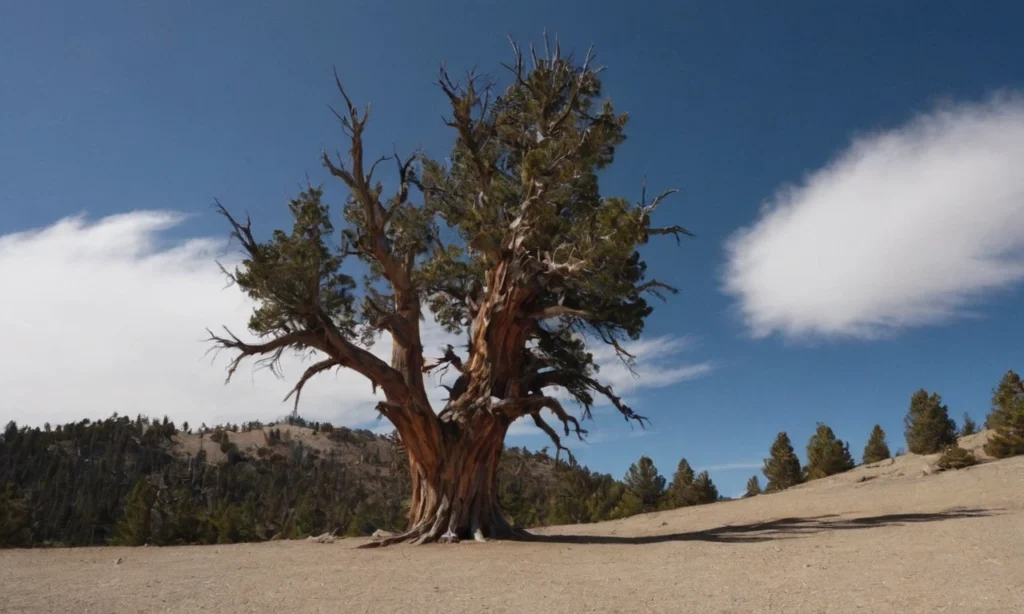Nestled high in California’s White Mountains, the Ancient Bristlecone Pine Forest stands as a remarkable testament to nature’s resilience and longevity. Home to the oldest known non-clonal organisms on Earth, this unique forest harbors trees that have witnessed over 4,000 years of history, making it one of the most fascinating natural wonders in the United States.
Location and Environment
Located at elevations between 9,800 and 11,000 feet (3,000-3,400 meters), the forest exists in an environment where most other plants cannot survive. Part of the Inyo National Forest, this harsh alpine region experiences extreme temperature fluctuations, strong winds, and minimal precipitation. Yet it is precisely these challenging conditions that have contributed to the bristlecone pines’ exceptional longevity.
The Ancient Trees
The star of this forest is Methuselah, a bristlecone pine that has lived for over 4,800 years, though its exact location is kept secret to protect it from vandalism. These ancient trees, with their twisted, gnarled trunks and sparse foliage, showcase nature’s artistic sculpture through millennia of survival. The trees grow incredibly slowly, sometimes adding only an inch of girth per century, which contributes to their dense, resin-rich wood that resists insects, rot, and disease.
Scientific Significance
The bristlecone pines have proved invaluable to science, particularly in the field of dendrochronology – the study of tree rings. Their growth rings provide crucial data about climate changes over thousands of years, helping scientists understand historical weather patterns and improve climate research. The trees’ remarkable age has also helped calibrate radiocarbon dating techniques.
Visitor Experience
The forest offers several hiking trails, including the popular Discovery Trail and the Methuselah Grove Trail, where visitors can observe these ancient sentinels up close. The Schulman Grove Visitor Center provides educational exhibits about the trees’ biology, history, and significance. Interpretive signs along the trails help visitors understand the unique adaptations that allow these trees to survive in such harsh conditions.

Conservation Efforts
Protected as part of the Inyo National Forest, the Ancient Bristlecone Pine Forest is carefully managed to preserve these living monuments. Climate change, potential wildfires, and human impact pose ongoing challenges to their survival. Park rangers and scientists work diligently to monitor the trees’ health and maintain the delicate balance of this unique ecosystem.
Photography and Tourism
The forest has become a popular destination for photographers and nature enthusiasts, particularly during sunrise and sunset when the golden light illuminates the trees’ sculptural forms. The high elevation and clear mountain air create spectacular opportunities for both landscape and night sky photography. However, visitors are reminded to stay on designated trails and practice responsible tourism to protect these ancient organisms.
Seasonal Access
The forest is typically accessible from mid-May through November, weather permitting. Winter snows often close the access road, making the area inaccessible during the colder months. Visitors are advised to check road conditions and bring appropriate gear, as weather can change rapidly at high elevations.
Cultural Significance
Beyond their scientific value, the bristlecone pines hold cultural significance for many people, symbolizing perseverance and resilience. Native American tribes of the region have long regarded these trees with reverence, and they continue to inspire artists, writers, and philosophers contemplating themes of time, endurance, and natural beauty.
Conclusion
The Ancient Bristlecone Pine Forest represents more than just a collection of old trees; it stands as a living laboratory, a natural art gallery, and a reminder of nature’s incredible capacity for survival. These ancient organisms, having witnessed thousands of years of Earth’s history, continue to provide valuable scientific insights while inspiring awe in visitors from around the world. Their preservation remains crucial not only for scientific research but also for future generations to witness these remarkable monuments to time.


